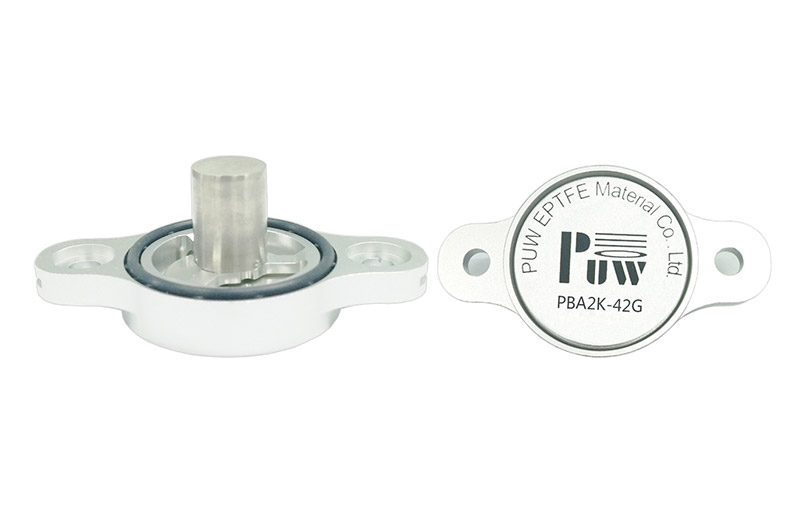Focus on PUW EPTFE Material Co., Ltd - Get to know the new information of the industry quickly!

2025-07-02 11:24:54
Waterproof Explosion-Proof Valves are specialized industrial components designed to operate safely in hazardous environments where both water ingress and explosive atmospheres are present. These valves combine robust construction with advanced safety features to prevent ignition sources while maintaining reliable performance in wet conditions.

These valves meet stringent international standards for explosion protection, typically certified under ATEX (2014/34/EU), IECEx, or UL 1203 for North American markets. The explosion-proof enclosure is rated to contain internal explosions up to 1.5 times the maximum experimental safe gap (MESG) for the designated gas group (typically Group IIB or IIC).
Featuring an IP68 or IP69K ingress protection rating, these valves can withstand continuous submersion in water at depths up to 3 meters for 72 hours (IP68) or high-pressure, high-temperature water jets (IP69K). The sealing system utilizes FKM (Fluorocarbon Rubber) or EPDM gaskets with a Shore A hardness of 70-90 for optimal compression set resistance.
The valve body is typically constructed from 316L stainless steel or duplex stainless steel (UNS S32205), offering:
Corrosion resistance: ≤0.1 mm/year in 3.5% NaCl solution
Tensile strength: ≥515 MPa (316L), ≥620 MPa (Duplex)
Operating temperature range: -40°C to +150°C (standard), up to +250°C (special versions)
| Parameter | Standard Range | High-Performance Variants |
|---|---|---|
| Maximum Working Pressure (MWP) | 16 bar (232 psi) | 40 bar (580 psi) |
| Flow Coefficient (Cv) | 2.5-25 (depending on size) | Up to 50 |
| Leakage Class | ANSI/FCI 70-2 Class IV | Class VI (bubble-tight) |
Used in seawater injection systems, produced water handling, and firewater deluge systems where valves must withstand salt spray, hydrocarbon exposure, and Zone 1 hazardous areas.
Critical for handling flammable liquids (flash point <60°C) in washdown areas or outdoor installations subject to rainfall. Common applications include:
Solvent transfer lines
Reactor feed systems
Emergency venting systems
Deployed in dewatering systems and compressed air networks where methane (Group I) or coal dust hazards coexist with high humidity or water immersion risks.
Essential for ballast systems, fuel oil transfer, and bilge pumping in engine rooms (Zone 2 hazardous areas) where saltwater corrosion resistance is mandatory.
| Interval | Action Items | Measurement Tools |
|---|---|---|
| Weekly | Visual check for external corrosion, seal integrity | Borescope, flashlight |
| Monthly | Operational test (full cycle), torque measurement | Torque wrench, position indicator |
| Annually | Full disassembly, seat lapping, gasket replacement | Surface profilometer, hardness tester |
Critical Steps:
Isolate valve and depressurize system (verify with 0-10 bar test gauge)
Clean flange faces with ISO 8501-1 Sa 2.5 standard
Apply FDA-approved silicone grease (NSF H1) to new gaskets
Torque bolts in cross pattern to 90% of specified value (typically 45 Nm for M12), then final pass at 100%
After any maintenance involving the flame path:
Measure flange gaps with go/no-go gauges (max 0.15mm for Group IIB)
Verify thread engagement (≥5 full threads for conduit entries)
Perform 500V insulation resistance test (min 100MΩ)
For stainless steel bodies in chloride environments:
Apply cathodic protection at -0.85V vs. Ag/AgCl reference
Quarterly ferroxyl testing for iron contamination
Passivation with 20% nitric acid (ASTM A967) every 3 years

Telephone: 0769-22850556
Email: lvch@puw-eptfe.com
Address: No.20, Wanjiang Industrial Street, Wanjiang District, Dongguan City, Guangdong Province, China
© 2025 PUW EPTFE Material Co., Ltd. All rights reserved.
Privacy policy | Terms and Conditions